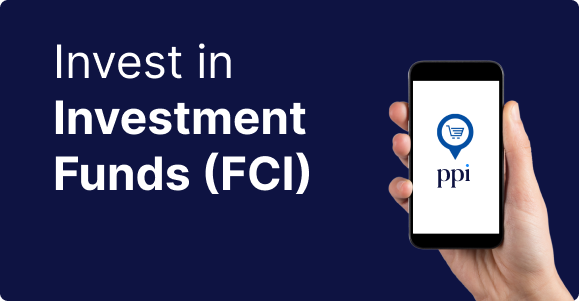Benefits of operating with ONs
Fixed rent
You can know in advance its profitability, since its payment flow is pre-established.
Variety
The offer is very wide. There are ONs from different companies and issuance conditions.
Currency
You can access ONs in pesos and dollars -with integration and payment in this currency or in pesos-
In which ONs can I invest?
Access all quotes in real time, and know all your options.
Potential your opportunities
In the Research section you will find all the reports to optimize your decisions.
FAQs
It is a bond issued by a private company for the purpose of financing that is negotiated in both the local and international markets. The issuer undertakes, according to the terms of the Issuance Conditions, to return to the investor on a certain date the amount received as a loan and to repay said loan with interest. Therefore, given that whoever invests in a bond knows in advance the payment scheme and the income that he will obtain, these instruments are called Fixed Income.
The characteristics of the bond are expressed in its Issuance Conditions, and it is important that each investor knows them before investing. Among them, we highlight at least 10 keys: 1.- Who is the issuer. A country, a province or a company?- 2.-Total amount of the issue, and minimum amount that can be purchased. It makes it easier to know the liquidity of the bonds in the market 3.- Quotation and payment currency, which are not necessarily the same.4- Maturity date. Indicates the day on which the bond ceases to exist, and the issuer terminates the obligation.5.- Interest rate that will be paid and what that payment will be like. Its rate can be fixed or variable, and the interest payment structure can be monthly, quarterly, etc… 7.-Amortization Structure. The capital return dates, which can be partial or total at the end of the life of the bond (what is known as a bullet).8.- Indexation. Especially in Argentina this is a very important point. The bond may have a capital or interest indexation scheme to different indicators, for example, inflation (CER), interest rates (BADLAR) or the dollar price (Dollar Linked bonds).9.- Guarantee and Legislation. 10.- Risk rating
In the case of ONs, the liquidity of the bond in the secondary market will be key, as will the rating of the issuing company assigned by a risk rating company external to the company. Specifically, this note measures and qualifies the issuer's ability to meet coupon payments and debt amortization. It is key because this will give the investor an idea of the magnitude of risk that he is assuming when purchasing that debt, which, remember, is not from the Sovereign State but from a private company.
The basic measure of performance – or profitability – of bonds is the Internal Rate of Return (IRR), or Yield to Matuirity (YTM). It is the rate of return that equates the present value of the flow of funds (interest + capital amortization) to the market price of the bond (or the initial investment). It is very important to keep in mind that the IRR calculated at the time of making the investment will be equal to the return that it actually ends up giving, as long as two important conditions are met: 1) that the bond is kept in the portfolio until maturity, and 2) that all coupons collected can be reinvested at the same Internal Rate of Return at the time of purchase. If the bond is not kept in the portfolio until maturity, its sale price will impact the total return rate of the investment, potentially causing it to be different from that initially calculated. This is related to one of the risks of bond investing. Regarding the reinvestment of coupons, when they are invested at a lower IRR, the final return on the investment will be lower than what was estimated at the time of purchase (and vice versa). This is precisely what is called 'reinvestment risk.' Another measure of returns related to a bond investment is the current yield, or Current Yield. It is a performance measure that relates the annual coupon to the market price of the bond. The IRR will be higher than the Current Yield when the security is trading below par, and lower in the reverse case. The point is that the Current Yield considers only interest earnings, while the IRR also includes capital gains and the reinvestment of funds.
Yeah. Bonds can be issued under different conditions, and according to them they can be classified into groups: Zero coupon bonds: Zero coupon bonds are those that do not pay interest (coupon) during their existence. The interest rate that the investor obtains is implicit in the difference between the price he pays to acquire it, and what he obtains when he sells it or the bond matures. These bonds, therefore, are tendered - and then priced - at a discount. Fixed and floating rate bonds: With the exception of Zero Coupon bonds, the rest of the debt securities make periodic payments. The reference rate for the payment of income can be fixed or variable. Fixed interest rate bonds are those that set a certain rate when they are issued. In this same sense, there are bonds with a graduated fixed rate, that is, a fixed interest rate that increases as time passes (they are usually known as a step up coupon). Variable interest rate bonds are those in which the coupon is agreed based on the evolution of a certain reference interest rate, for example, BADLAR, etc. In some cases, a spread is usually added to this reference rate. Amortizable bonds during the life of the bond or at maturity (bullet): Bonds that amortize capital during the term of existence are those that return part of the borrowed capital in installments. Therefore, in addition to interest, the bond can pay an extra amortization amount. Amortizable bonds at maturity, on the other hand, and as the name indicates, return the entire capital loaned in a single payment at the end of the life of the bond. Inflation-adjustable bonds: Bonds that have an inflation adjustment clause are those whose capital is adjusted by a specific price index (CER or UVA) and interest is calculated on adjusted balances. Linked Dollar Bonds: These are titles denominated in dollars, but that are subscribed and paid in pesos. But they do the latter at the official exchange rate -at the time of integration, and at the time of payment-. There are also convertible bonds, bonds with a repurchase option (Callable Bond), and other income coupons at the same rate.
The purchase of a bond implies a series of risks - which may have a different impact depending on the type of bond. Among them, the following stand out: Risk of Loss of Purchasing Power: If the inflation rate is higher than the rate generated by the investment in the bond, there is a loss of purchasing power. Expectations of higher inflation tomorrow lead to higher interest rate levels today. Devaluation Risk can also be framed within the risk of loss of purchasing power, if it is considered that a devaluation of the local currency would result in a pass-through to the price of the goods. Interest rate risk: This risk has two components, Reinvestment Risk and Price Risk. Reinvestment Risk is the risk of not being able to invest the money produced by collecting the bond's income coupons, at an interest rate equal to the IRR. On the other hand, Price Risk is what the investor runs when he does not know the future price at which he can sell the bond, if he does not want to hold it until maturity. This risk can be measured through the duration and convexity of the title. Default risk: This risk refers to the uncertainty about the occurrence of the payment of income coupons and/or the return of capital. Within this Default risk, it is convenient to distinguish between Country Risk and Private Risk. There are also other risks such as redemption risk - in bonds that contemplate in their conditions the possibility of early redemption -, among others.
The Principal (known in English as Face Value) is the amount that whoever purchases a bond will receive at the end of its life. This return of capital can be made in installments, or complete at the end of the life of the bond. Principal payments are called amortization. There are also cases of bonds that capitalize interest. In this way, the Principal of these bonds increases as they capitalize coupons. While the coupon is the amount that the bondholder will receive in interest and amortization (if it amortizes in installments). The payment frequency is variable; It can be monthly, quarterly, semiannual or annual.









